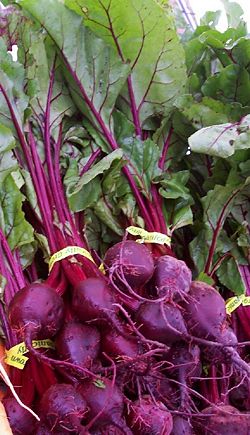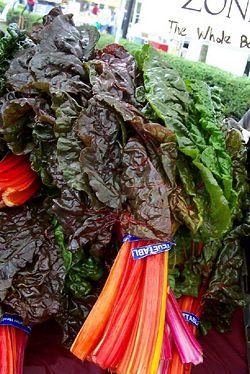Beet: Difference between revisions
imported>Caesar Schinas m (Bot: Update image code) |
Pat Palmer (talk | contribs) m (Text replacement - "United States" to "United States of America") |
||
| Line 19: | Line 19: | ||
===Sugar beet=== | ===Sugar beet=== | ||
Developed in [[Germany]] in the 18th century, this is now a major source or sugar for the world. It is grown extensively in the [[United States]] and Europe. | Developed in [[Germany]] in the 18th century, this is now a major source or sugar for the world. It is grown extensively in the [[United States of America]] and Europe. | ||
===Leaf beet=== | ===Leaf beet=== | ||
Revision as of 10:52, 2 February 2023
Beet is the common name for the root of Beta vulgaris, cultivated as a vegetable. It is native to southern Eurpoe and Asia.
Cultivation
Beets are best grown in light, friable soils. They require cool temperatures in the soil, around 60-65°F; above 77°F they start to be damaged.
The beet is a biennial, reproducing only in its second year, but as a crop it is usually harvested the same year it is planted, because the root will already be fully formed.
Varieties
Garden beet
Also called table beet or beetroot, this is grown directly for eating. It is eaten cooked as a vegetable accompaniment to meat, or in soups, especially borscht; or pickled, cold, in salads.
Sugar beet
Developed in Germany in the 18th century, this is now a major source or sugar for the world. It is grown extensively in the United States of America and Europe.
Leaf beet
Better known as Swiss chard, this is a variety grown for its greens, which are used in salads or as a seasoning.

